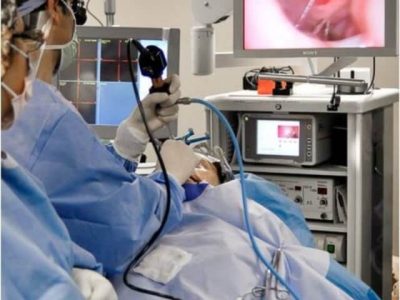Tonsil diseases are among the most common conditions encountered in ear, nose, and throat (ENT) practice, particularly in children. Understanding the role of the tonsils, the causes of inflammation, and when tonsil surgery (tonsillectomy) is necessary can help patients and parents make informed decisions about treatment options.
As an ENT doctor, I often see patients with recurrent sore throats, snoring, or breathing difficulties during sleep — all of which may be related to tonsil problems. This article explains everything you need to know about tonsil diseases, tonsillectomy indications, recovery, and alternatives to surgery.
Understanding the Tonsils and Their Function
The tonsils are two oval-shaped pads of lymphatic tissue located on either side of the back of the throat. They are part of a larger immune defense structure called Waldeyer’s lymphatic ring, which helps the body fight viruses and bacteria entering through the mouth and nose.
In childhood, tonsils play an essential role in immune system development. However, when this protective system becomes overactive or infected repeatedly, it can lead to tonsil inflammation (tonsillitis), enlargement, and other chronic issues.
Common Causes of Tonsil Infections
Tonsil infections may be caused by both viruses and bacteria. The most frequent viral agents include:
- Respiratory Syncytial Virus (RSV)
- Influenza and Parainfluenza viruses
- Adenovirus
- Epstein-Barr Virus (EBV)
- Herpes Simplex Virus (HSV)
Bacterial infections are often due to:
- Streptococcus (Strep throat)
- Haemophilus influenzae
- Moraxella catarrhalis
- Staphylococcus aureus
Diagnosis of tonsil infections is made through clinical examination and laboratory testing, such as throat cultures or rapid strep tests. Based on the cause, your ENT specialist will plan appropriate medical or surgical treatment.
Symptoms and Signs of Tonsil Diseases
Tonsil diseases can affect both children and adults, though they are more common in younger patients. Some of the key symptoms include:
- Frequent sore throats and difficulty swallowing
- Fever, fatigue, or malaise
- Snoring or sleep apnea due to enlarged tonsils
- Mouth breathing and nasal obstruction
- Bad breath (halitosis)
- Swollen lymph nodes in the neck
- Recurrent episodes of febrile tonsillitis
In severe or chronic cases, these symptoms can interfere with daily life, affect appetite, and even cause growth delays in children.
When is Tonsil Surgery (Tonsillectomy) Necessary?
Not all tonsil problems require surgery. However, tonsillectomy may become necessary when medical treatments are no longer effective, or complications develop.
Indications for Tonsillectomy:
- More than five episodes of tonsillitis in the past year
- More than three episodes per year for two consecutive years
- Recurrent tonsillitis associated with high fever or febrile seizures
- Chronic streptococcus or diphtheria carrier unresponsive to antibiotics
- Persistent symptoms such as:
- Halitosis (bad breath)
- Neck pain or lymph node swelling
- Sleep apnea and snoring not related to nasal problems
- Peritonsillar abscess (infection around the tonsil)
- Suspicion of tonsillar tumors
Your ENT specialist will also consider the patient’s age, health status, and season before recommending surgery. In children under 3 years, medical management is preferred unless urgent intervention is required.
Tonsil Surgery Procedure Explained
Tonsillectomy is a routine and safe procedure performed under general anesthesia. The patient remains asleep and feels no pain during surgery.
- Duration: Approximately 40 minutes, with total anesthesia time around 90 minutes.
- Technique: The tonsils, along with their capsule, are carefully removed from the surrounding throat muscles using advanced surgical instruments.
- Day Surgery: Most patients can go home the same day after short observation.
In some cases, especially when adenoids are also enlarged, an adenoidectomy may be performed simultaneously to improve breathing and prevent further infections.
Recovery After Tonsillectomy
Recovery time after tonsil surgery typically ranges between 7 to 14 days. Following proper post-operative care guidelines will help minimize discomfort and prevent complications.
1. Pain Management
Mild to moderate throat pain is expected, especially in the first few days. Your doctor may recommend acetaminophen (paracetamol) or ibuprofen. Avoid aspirin in children due to the risk of Reye’s syndrome.
2. Hydration
Staying well-hydrated is crucial for healing. Cold water, ice chips, or non-acidic juices can soothe the throat and reduce swelling.
3. Diet
Follow a soft and cool diet for several days:
- Ice cream, yogurt, pudding
- Mashed potatoes, soups, smoothies
- Avoid spicy, hot, or crunchy foods that may irritate the surgical site.
4. Rest and Activity
Adequate rest speeds recovery. Avoid strenuous exercise, shouting, or heavy lifting for at least two weeks. Children should stay home from school for 7–10 days.
Possible Risks and Complications
Although tonsillectomy is generally safe, as with any surgery, certain risks exist. Patients should be aware of these potential complications:
- Bleeding: The most common risk, especially within the first week after surgery. Seek immediate medical care if there is blood in saliva.
- Infection: Rare, but antibiotics may be prescribed if necessary.
- Dehydration: Pain while swallowing may lead to reduced fluid intake.
- Voice changes: Temporary voice differences or nasal tone can occur but usually resolve as healing progresses.
Your ENT surgeon will provide detailed guidance on what to expect and how to handle any post-operative issues.
Alternatives to Tonsil Surgery
In many mild cases, tonsillectomy can be avoided with non-surgical treatments and lifestyle adjustments. Your ENT doctor may recommend:
- Antibiotics for bacterial infections
- Saltwater gargles or throat lozenges for symptom relief
- Pain relievers to reduce inflammation
- Adequate hydration and rest
- Home remedies, such as warm herbal teas with honey
If these conservative methods fail to control recurrent infections or obstructive symptoms, surgery remains the most effective solution.
Pediatric Tonsillectomy: What Parents Should Know
Children are the most frequent candidates for tonsil surgery. Parents should watch for signs such as:
- Persistent snoring or sleep apnea
- Difficulty swallowing or mouth breathing
- Frequent throat infections despite antibiotic use
Untreated tonsil enlargement may cause sleep disturbances, behavioral issues, and delayed growth due to poor sleep and appetite. Pediatric tonsillectomy helps restore normal breathing, improve sleep quality, and reduce future infections.
Post-Tonsillectomy Care Tips from an ENT Specialist
To ensure a smooth recovery after tonsil removal, follow these essential care tips:
- Follow your doctor’s medication plan exactly as prescribed.
- Avoid acidic drinks (like orange juice) that may sting the throat.
- Keep the room air humidified to prevent dryness and irritation.
- Monitor for bleeding, especially around days 5–7 when the surgical scab naturally separates.
- Schedule follow-up visits with your ENT specialist to check healing progress.
When to Call Your Doctor
Contact your ENT specialist immediately if you experience:
- Persistent bleeding or vomiting blood
- Severe pain unresponsive to medication
- Dehydration symptoms such as dry mouth or reduced urination
- Fever over 38°C (100.4°F)
- Difficulty breathing or swallowing
Early evaluation ensures quick treatment of any complications.
Tonsillectomy in Qatar – Expert ENT Care
If you or your child are suffering from recurrent throat infections, snoring, or sleep disturbances, consulting a qualified ENT specialist in Qatar is the best step toward long-term relief.
At our clinic, we offer comprehensive evaluation, diagnosis, and treatment for all tonsil diseases, including pediatric tonsillectomy, adult tonsil surgery, and minimally invasive ENT procedures. Our patient-centered approach ensures safety, comfort, and optimal recovery outcomes.
Conclusion
Tonsillectomy remains one of the most effective and commonly performed ENT surgeries worldwide. When performed for the right reasons and followed by proper care, it offers lasting relief from recurrent infections and breathing difficulties.
If you’re considering tonsil surgery in Qatar, schedule a consultation with an experienced ENT doctor. A professional evaluation will determine whether medical therapy or surgical intervention is the best path for your health and quality of life.
Ready to take the next step? Contact Dr Dogan’s today your personal consultation will help clarify your anatomy, expectations, cost, downtime, and how you can soon smile without concern about your ears.
Call now: +974 5523 9430 / +974 4016 0000 | Email: info@drcemdogan.com
Note: This page is for informational purposes only and does not constitute medical advice. Always consult with a qualified surgeon to discuss your individual case.






